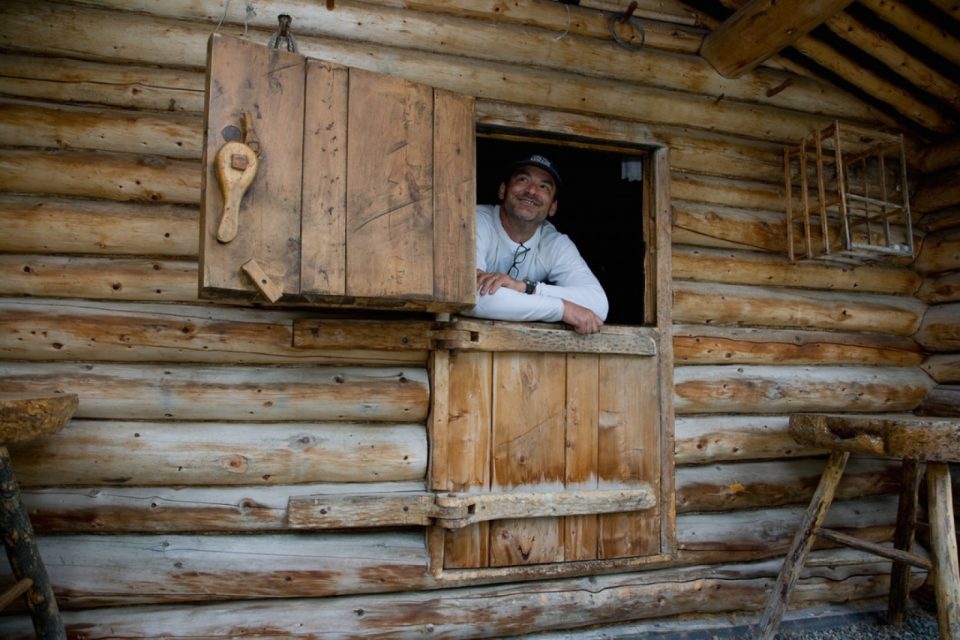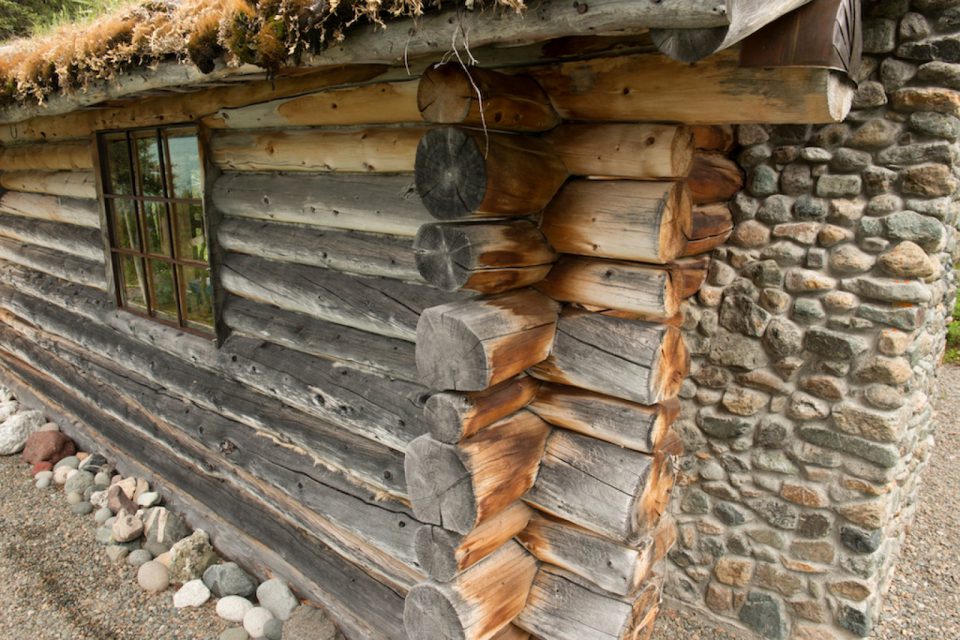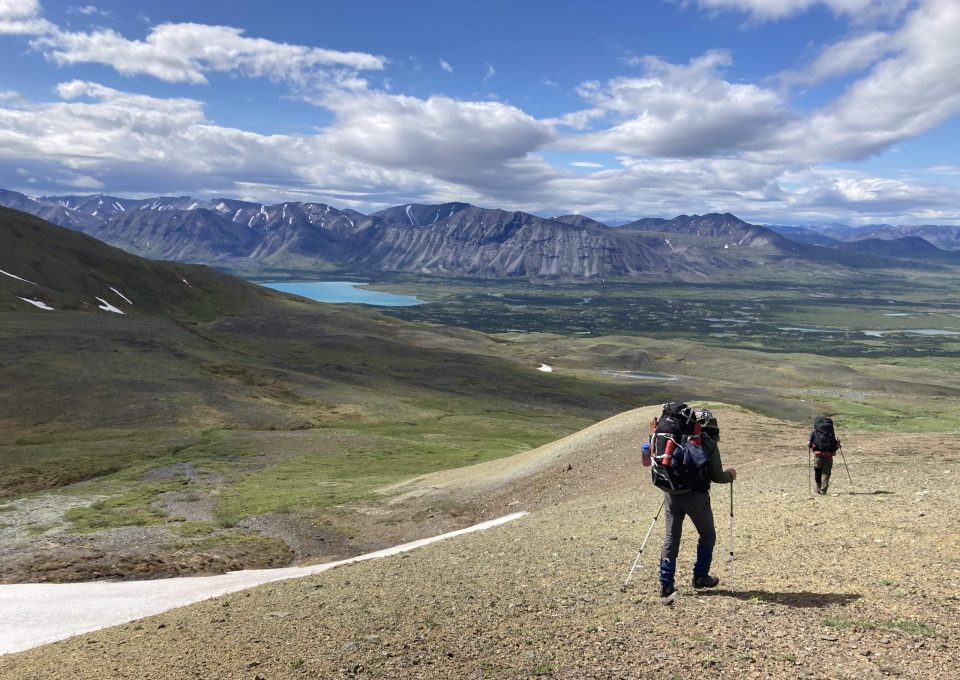The Life And Legend Of Dick Proenneke
Perhaps the greatest treat of an adventure to Twin Lakes in the hear of Lake Clark National Park, is a visit to the hand hewn log cabin of Dick Proenneke.
To live in a pristine land unchanged by man…
To roam a wilderness through which few other men have passed…
To choose an idyllic site, cut trees and build a cabin…
To be a self-sufficient craftsman, making what is needed from materials available…
To be not at odds with the world, but be content with one’s own thoughts and company…Dick Proenneke
An earthy, rugged and rustic icon, the log cabin has come to represent our innate desire for adventure. Bringing to mind a simpler time in our nation’s history, log cabins represent those living on the frontier of their imaginations. President Lincoln read books by candlelight in his boyhood cabin. Harriet Beecher Stowe wrote passionately about Uncle Tom’s Cabin. We see log cabins scattered across the 19th century American frontier as the Monroe Doctrine was being fulfilled. For some, like Dick Proenneke, living on the frontier is seen as an opportunity to experience a free, solitary, peaceful life where one can engage nature and the universe, without the entanglement and cares of modern society. “It was something I had to do,” said Dick Proenneke when asked why he built a cabin on the crystalline shore of Twin Lakes in Alaska’s Lake Clark National Park.
Initially, Proenneke intended to build the cabin and live in it for only one year. It was a challenging goal; one that he accomplished. When the cabin was complete and his year was up, Proenneke returned home to Kodiak Island only to discover that living in the Alaska wilderness was what he needed to for fulfillment. He transitioned permanently to Twin Lakes in 1968. In that breathtaking landscape, he would hike, hunt, fish, and live, leaving only occasionally to visit family. Dick Proenneke lived from 1916-2003.
To Dick Proenneke, building his Hope Creek log cabin at Twin Lakes in Alaska’s Lake Clark National Park was a chance for him to rely solely on his own strength and know-how. Once completed, he lived comfortably without phone, electricity and running water (except for the streams and rivers close by, not to mention Twin Lakes) for 30 years. In fact, he had never been more “home” in all his life. Dick Proenneke was the original “Survivor.”
After serving in the Navy during WWII, Proenneke succumbed to his love of nature and Alaska and moved there in 1950. Proenneke became a well-respected mechanic gaining a reputation as an intelligent, hard worker while employed in the Alaska Fish & Wildlife Service. Saving his money, he retired early and decided on Twin Lakes for his retirement home.
Harvesting logs from a group of Spruce trees nearby his camp, Proenneke set out to build his log cabin alone, by hand, and, he did so in one year’s time. Bone-chilling cold and ghostly silence were enemies that initially pushed back against this endeavor; but Proenneke endured.
Dick Proenneke made many of the tools for his construction project, such as a mallet he crafted from one of the spruce trees. Using his mechanical skills, he fashioned each tool with precision. Spreading a gravel base across a 15’x10’ space to provide a foundation for his log cabin, Proenneke continued hewing the long logs one at a time with exactness so they would inter-lock as they were stacked one on top of the other (imagine full size Lincoln Logs). Dick kept working steady and true to fulfill his goal. He took great care in crafting the logs for his home saying he didn’t want them to “look like a boy scout was turned loose on them with a dull hatchet.”
Patiently, Proenneke continued building his dream. He saw that nature around him had a sensible time table for all that it created, and knew that he could not rush this work either. By the time Dick finished his cabin it had windows, a Dutch door, fireplace, and a moss-covered roof making it waterproof. He also built a cache to keep his food storage out of animals’ reach. Brave bush pilots flew in food items and other supplies that he could not produce himself.
It became clear that Dick was conscientious about the land and nature, wanting to preserve all that he saw around him. His reputation grew in the Alaska travel community. Soon he found himself a naturalist and guide to Alaska’s backcountry around Twin Lakes.
By recording his amazing life story through detailed journals, film, and video, Dick Proenneke has left the world a unique gift. His experiences, observations and knowledge of Alaska’s Twin Lakes, wildlife, flora, fauna, trees, migratory animals and the seasons that make up Alaska’s climate are compelling.
To many people, Dick Proenneke stands as an example of all that is right about the indomitable spirit of Alaska and its people. He is still considered to be the ultimate Alaskan adventurer. Fortunately, in part because of conservation efforts, Twin Lakes and Lake Clark National Park remain much the same as it did when Proenneke dwelled in the land.
Dick Proenneke’s log cabin remains a symbol of perseverance. His enduring spirit beckons adventure seekers to explore the frontier of their imagination. Come join Alaska Alpine Adventures on a wilderness tour to see Dick’s old home and the Twin Lakes country of Lake Clark National Park that he loved so much.





